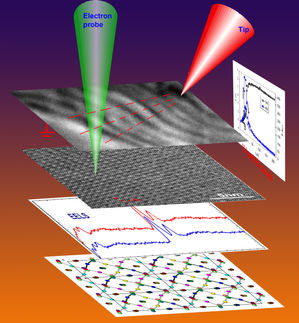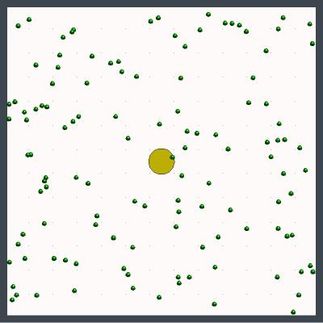Potential leap forward in electron microscopy
Advertisement
Results: MIT electrical engineers have proposed a new scheme that can overcome a critical limitation of high-resolution electron microscopes: they cannot be used to image living cells because the electrons destroy the samples. The researchers suggest using a quantum mechanical measurement technique that allows electrons to sense objects remotely without ever hitting the imaged objects, thus avoiding damage.
Why it matters: A non-invasive electron microscope could shed light on fundamental questions about life and matter, allowing researchers to observe molecules inside a living cell without disturbing them. If successful, such microscopes would surmount what Nobel laureate Dennis Gabor concluded in 1956 was the fundamental limitation of electron microscopy: "The destruction of the object by the exploring agent."
How it works: Traditional electron microscopes use a particle beam of electrons, instead of light, to image specimens. These beams offer extremely high resolution, up to 0.2 to 10 nanometers — 10 to 1,000 times greater than a traditional light microscope.
In contrast, with the new proposed quantum mechanical setup, electrons would not directly strike the object being imaged. Instead, an electron would flow around one of two rings, arranged one above the other. The rings would be close enough together that the electron could hop easily between them. However, if an object (such as a cell) were placed between the rings, it would prevent the electron from hopping, and the electron would be trapped in one ring.
This setup would scan one "pixel" of the specimen at a time, putting them all together to create the full image. Whenever the electron is trapped, the system would know that there is a dark pixel in that spot.
Next steps: Assistant Professor Mehmet Fatih Yanik, senior author of the paper, says he expects the work "will likely ignite experimental efforts around the world for its realization, with perhaps the first prototype appearing in five years or so."
Though technical challenges need to be overcome (such as preventing the charged electron from interacting with other metals in the microscope), Yanik believes that eventually such a microscope could achieve single-nanometer resolution. That level of resolution would allow scientists to view molecules such as enzymes and nucleic acids inside living cells.





























































